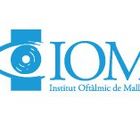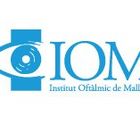
Institut Oftàlmic de Mallorca
Anselm Turmeda 10
Laser Eye Surgery (LASIK)
Starting from Price on request

Institut Oftàlmic de Mallorca
Anselm Turmeda 10
Established
Highlights at Institut Oftàlmic de Mallorca
Map View
 Click to explore
Click to explore
-
Reviews
No Patient Review
Languages spoken
- English
Laser Eye Surgery (LASIK) at Institut Oftàlmic de Mallorca
What does Institut Oftàlmic de Mallorca offer patients?
How many specialists are there and what accreditation's have been awarded to Institut Oftàlmic de Mallorca?
WHY US?
At Medijump, we're making medical easy. You can search, compare, discuss, and book your medical all in one place. We open the door to the best medical providers worldwide, saving you time and energy along the way, and it's all for FREE, no hidden fees, and no price markups guaranteed. So what are you waiting for?

Free

Best Price

Widest Selection

Risk-Free
What you need to know about Laser Eye Surgery (LASIK) in Mallorca
LASIK (laser in situ keratomileuses), commonly referred to as laser eye surgery, is a type of refractive eye surgery to correct vision issues. The procedure reshapes the cornea in order to allow light that enters the eye to be properly focused onto the retina for better and clearer vision. It is mainly performed to treat hyperopia (farsightedness), myopia (nearsightedness), and astigmatism. In some cases, LASIK may also be performed on people with mild to moderate cases of refractive errors.
LASIK surgery is basically pain-free and quick. The results enable you to have improved vision eyeglasses or contact lenses. The procedure can be performed on people between the ages of 21 and 40. Sometimes, people over 40 years old can also undergo this procedure.
It is important to be aware that LASIK is not for everyone. There are some cases where patients are not recommended to undergo the procedure, particularly those with keratoconus, immune system disorders, large pupils, advanced glaucoma, eye issues caused by diabetes, past ocular herpes infection, autoimmune disorders, and dry eyes. Make sure to consult with your eye doctor before considering undergoing this type of surgery.
Before LASIK, you may have nearsightedness, farsightedness, or astigmatism and you are probably dependent on eyeglasses or contact lenses. Wearing either eyeglasses or contact lenses limits your activities. After LASIK, you can have a clear vision and live an active lifestyle, such as participating in sports. The procedure will significantly improve your quality of life.
What's the Recovery Time for Laser Eye Surgery (LASIK) Procedures in Mallorca?
During the day of the procedure, you may experience hazy or blurry vision. However, your vision will improve over the next couple of days after the procedure. If your job is not physically demanding, you should be able to go back to work within 2-3 weeks after the procedure. Your eyes will continue to heal and improve for about 6 months after LASIK. It is important to follow all aftercare instructions from your healthcare provider to minimize complications and accelerate the healing process.
What's the Success Rate of Laser Eye Surgery (LASIK) Procedures in Mallorca?
LASIK offers a very high success rate. Studies revealed that 95% of patients with nearsightedness can achieve 20/25 vision following their surgery. More than 8 out of 10 people who’ve had :ASIK surgery no longer need glasses or contact lenses in their daily activities.
The results you will get depend on several factors, including your specific refractive error. Those with low degree nearsightedness usually achieve the most successful result. The results are less predictable on people with high degree farsightedness or nearsightedness, along with astigmatism.
Some LASIK patients require a second surgery for enhancement because the surgery results led to an under-correction. In some very rare cases, some people’s eyes can slowly return to the level of vision they had before surgery due to certain conditions, such as another eye problem, abnormal wound healing, and hormonal imbalances.
LASIK also carries some risks that you need to be aware of, including dry eyes, glare, double vision, halos, under-corrections, overcorrections, flap problems, astigmatism, regression, vision loss, and vision changes. Make sure to talk to your eye doctor about the risks.
Other Ophthalmology Procedures Available at Institut Oftàlmic de Mallorca
Popular Procedures in Mallorca
Doctors at Institut Oftàlmic de Mallorca
-

Dr Antoni Riera Siquier
VIEW DETAILS
-

Dr Antonio Amer Rubi
VIEW DETAILS
Hospitals and Clinics Nearby Institut Oftàlmic de Mallorca Offering Laser Eye Surgery (LASIK)

CONTACT SUCCESSFUL



















